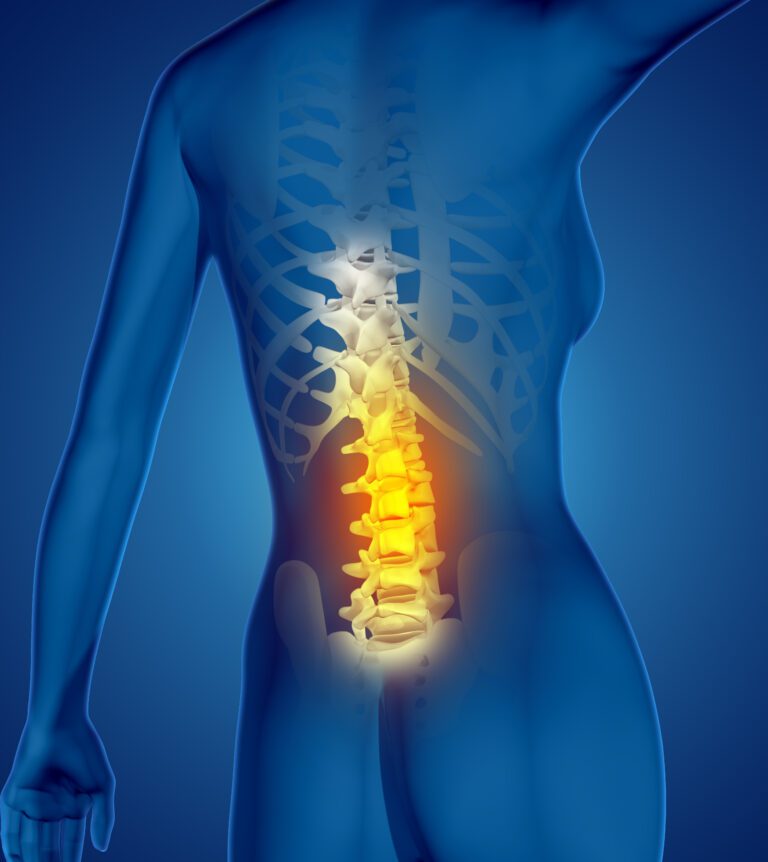ENDOSCOPIC SURGERY

What is Endoscopic Spine Surgery?
Endoscopic spine surgery (ESS) is an ultra-minimally invasive surgical procedure that effectively relieves chronic low back and leg pain.
This state-of-the-art spine surgery utilizes an HD camera attached to an endoscope inserted through a ¼ inch skin incision to the target pain generator in your spine.
The endoscopic orthopedic procedure allows spine surgeons to operate safely, with greater accuracy, and offer patients better outcomes.
The surgeon can observe the spine on an HD monitor and operate through the endoscope using highly specialized micro-instruments like a laser, radiofrequency probe, or graspers.
What are the Patient Benefits of Endoscopic Spine Surgery?
This ultra-minimally invasive spine surgery is the most effective surgical technique that relieves a herniated disc, low back pain, and sciatica. Because it utilizes a 1/4 inch incision, patients recover faster than minimally invasive spine surgery.
- Shorter recovery time and return to work
- Smaller incision-less post-operative pain
- Conscious IV sedation and local anesthetic – less risk, avoiding general anesthesia
- Reduced post-operative infection risk
- Spine fusion alternative – in individual select patients
This endoscopic spine surgery effectively treats painful conditions caused by a herniated disc, spinal stenosis, sciatica, and. This procedure is an excellent solution for patients suffering from pain seeking a faster return to an active lifestyle.
How is Endoscopic Spine Surgery Different than Minimally Invasive Spine Surgery?
Minimally invasive spine surgery (MIS), the standard of care in spine surgery, represents a broad spectrum of techniques, with endoscopic being the least invasive. Endoscopic spine surgery is as effective as the MIS microdiscectomy procedure at relieving painful spine conditions.
However, unlike MIS, endoscopic spine surgery significantly reduces trauma to the patient’s muscles and soft tissue leading to faster recovery. The endoscopic procedure utilizes a surgical approach that avoids the major stabilizing muscles of the lower back.
Unlike the MIS incision of one inch or more, ESS uses a ¼ inch incision. Smaller surgical incisions and avoiding major back muscles can significantly improve patient outcomes.
Sometimes called ultra-minimally invasive, the endoscopic technique can be performed faster, allowing the surgeon better access to the spinal nerves and disc, and superior visualization. Also, ESS requires no general anesthesia, which affords patients less risk and faster discharge from the hospital within 2-3 hours of surgery.
How is Endoscopic Spine Surgery Performed?
Patients are lightly sedated with IV medication and positioned comfortably on the operating table. The surgeon then locally numbs the skin surgical site to ensure the patient is comfortable throughout the surgery.
Under fluoroscopic X-ray guidance, the physician guides a spinal needle and guidewire to the painful spinal disc. A micro-incision of ¼ inch is made. A metal dilator (the size of a pencil) and cannula are gently placed over the guidewire down to the spinal disc to establish the surgical portal. The guidewire and dilator are removed.
What is the Advantage of Endoscopic Spine Surgery?
Traditional or minimally invasive spine surgery aims to improve pain by decompressing or relieving pressure and irritation on the spinal cord and exiting nerve roots. During spine surgery, a surgeon is cautious to preserve spinal anatomy and the functionality of the spinal muscles in the patient’s back.
Sometimes, a surgeon’s outcomes do not align with patient expectations. Although the surgery has been successful, patients often experience residual pain or pain from surgical disruption of the spinal anatomy and back muscles.
Endoscopic Spine Surgery – Exceeding Patient-Surgeon Expectations
Endoscopic spine surgery aligns with a surgeon’s expected surgical outcomes and more closely with the patient’s desired expectations.
The patient’s desired results are to achieve relief from painful symptoms, restore physical function and resume their quality of life as soon as possible.
Endoscopic spine surgery utilizes the least invasive surgical approach that accomplishes a surgeon’s surgical outcome and patient expectations.
The surgeon has enhanced visualization and targeting of the spinal canal with less trauma than traditional spine surgery and an MIS microdiscectomy.
The result is an outcome that exceeds the surgeon’s and the patient’s expectations.
Benefits of endoscopic spine surgery:
- Shorter recovery time and faster return to daily physical activities, including work
- Muscle and spine preservation
- Reduced scarring internally and on the skin
- Less post-operative pain and less narcotic medication needed
- The smallest incision in spine surgery – ¼ inch
- Local anesthesia with mild IV sedation instead of general anesthesia
- Minimal blood loss
- Reduced risk of infection
- Spine fusion alternative – for select patients
- Outpatient procedure – patients typically leave 2 hours after surgery
Are You a Candidate for Endoscopic Spine Surgery?
Suppose you are suffering in pain with a spinal condition and have failed conservative treatment. In that case, you may be a candidate for endoscopic spine surgery.
Endoscopic spine surgery has excellent results in treating a herniated disc, facet joint syndrome, foraminal stenosis, and failed back surgery.
Personalized Pain Mapping – Identify the Pain Generator
Our candidate selection process begins with our proprietary Personalized Pain Mapping, where we define and identify the specific pain generator.
We listen carefully to your pain journey and your desired outcomes. Then we use diagnostic and therapeutic injections to pinpoint the pain generator.
We personalize a treatment plan that will effectively address your pain and desired outcomes with the patient. Many of our patients get better without any surgical intervention.
However, those patients we select for endoscopic spine surgery have great results and a high level of satisfaction.
As a leader in the least invasive spine surgery, DISC is bridging the gap between pain management and ultra-minimally invasive spine surgery.



